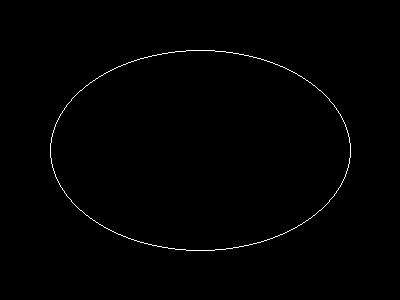When you wana use "ImageEllipse" function
in under GD 2.0.2 version, you can use "ImageArc" like bellow
----------------------------------------------------
$file_name = "test.png";
$screen_x = 300;
$screen_y = 200;
$x1 = $screen_x / 2;
$y1 = $screen_y / 2;
$radius = 30;
$image = ImageCreate($screen_x, $screen_y);
$black = ImageColorAllocate($image, 0,0,0);
ImageArc($image, $x1, $y1, $radius , $radius , 0, 360, $black);
ImagePng($image, $file_name);
ImageDestroy($image);
----------------------------------------------------
imageellipse
(PHP 4 >= 4.0.6, PHP 5, PHP 7)
imageellipse — Draw an ellipse
Description
bool imageellipse
( resource
$image
, int $cx
, int $cy
, int $width
, int $height
, int $color
)Draws an ellipse centered at the specified coordinates.
Parameters
-
image -
An image resource, returned by one of the image creation functions, such as imagecreatetruecolor().
-
cx -
x-coordinate of the center.
-
cy -
y-coordinate of the center.
-
width -
The ellipse width.
-
height -
The ellipse height.
-
color -
The color of the ellipse. A color identifier created with imagecolorallocate().
Return Values
Returns TRUE on success or FALSE on failure.
Examples
Example #1 imageellipse() example
<?php
// Create a blank image.
$image = imagecreatetruecolor(400, 300);
// Select the background color.
$bg = imagecolorallocate($image, 0, 0, 0);
// Fill the background with the color selected above.
imagefill($image, 0, 0, $bg);
// Choose a color for the ellipse.
$col_ellipse = imagecolorallocate($image, 255, 255, 255);
// Draw the ellipse.
imageellipse($image, 200, 150, 300, 200, $col_ellipse);
// Output the image.
header("Content-type: image/png");
imagepng($image);
?>
The above example will output something similar to:

Notes
Note:
This function requires GD 2.0.2 or later.
User Contributed Notes
agentyoungsoo at hanmail dot net
13 years ago
julian
11 years ago
if you want to display an ellipse in the upper left corner of an image, you can easily calculate the corresponding cx and cy values. this example will draw an ellipse having the same width and height as the image.
<?php
$ellipse_width = 100;
$ellipse_height = 200;
$ellipse_cx = ($ellipse_width / 2);
$ellipse_cy = ($ellipse_height / 2);
$img_x = $ellipse_width;
$img_y = $ellipse_height;
$img = imagecreate($img_x, $img_y);
$bg = imagecolorallocate($img, 255,255,255);
$ellipse_color = imagecolorallocate($img, 0, 0, 0);
imageellipse($img, $ellipse_cx, $ellipse_cy, $ellipse_width, $ellipse_height, $ellipse_color);
header("Content-type: image/png");
imagepng($img);
imagedestroy($img);
?>
themountainlion at gmail dot com
7 years ago
In example #1 above, the variable $bg is set but not used. Set the background to anything but black ,and it won't take effect. The example needs
imagefill($image, 0, 0, $bg);
Some other image function examples have the same issue.
simon_nuttall at hotmail dot com
9 years ago
This is an optimised and bug fixed version of nojer at yahoo dot com's rotatedellipse function. I've changed it so that the arguments are compatible with imageellipse. See notes on imagearc for original version.
<?php
function rotatedellipse($im, $cx, $cy, $width, $height, $rotateangle, $colour, $filled=false) {
// modified here from nojer's version
// Rotates from the three o-clock position clockwise with increasing angle.
// Arguments are compatible with imageellipse.
$width=$width/2;
$height=$height/2;
// This affects how coarse the ellipse is drawn.
$step=3;
$cosangle=cos(deg2rad($rotateangle));
$sinangle=sin(deg2rad($rotateangle));
// $px and $py are initialised to values corresponding to $angle=0.
$px=$width * $cosangle;
$py=$width * $sinangle;
for ($angle=$step; $angle<=(180+$step); $angle+=$step) {
$ox = $width * cos(deg2rad($angle));
$oy = $height * sin(deg2rad($angle));
$x = ($ox * $cosangle) - ($oy * $sinangle);
$y = ($ox * $sinangle) + ($oy * $cosangle);
if ($filled) {
triangle($im, $cx, $cy, $cx+$px, $cy+$py, $cx+$x, $cy+$y, $colour);
triangle($im, $cx, $cy, $cx-$px, $cy-$py, $cx-$x, $cy-$y, $colour);
} else {
imageline($im, $cx+$px, $cy+$py, $cx+$x, $cy+$y, $colour);
imageline($im, $cx-$px, $cy-$py, $cx-$x, $cy-$y, $colour);
}
$px=$x;
$py=$y;
}
}
function triangle($im, $x1,$y1, $x2,$y2, $x3,$y3, $colour) {
$coords = array($x1,$y1, $x2,$y2, $x3,$y3);
imagefilledpolygon($im, $coords, 3, $colour);
}
?>